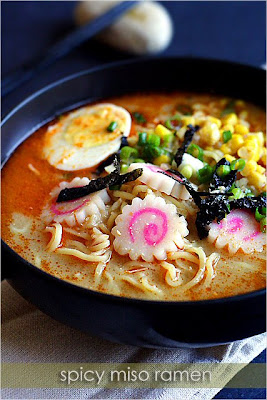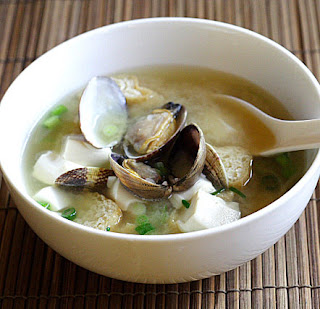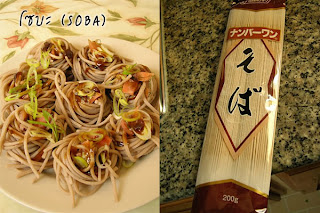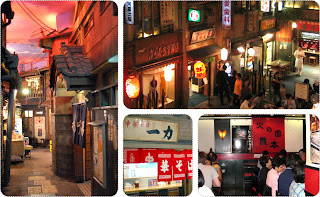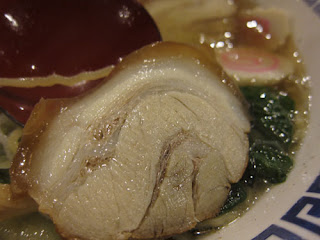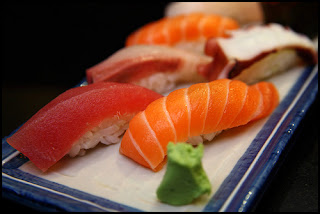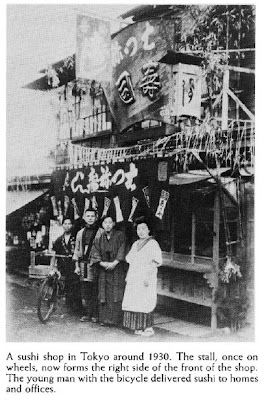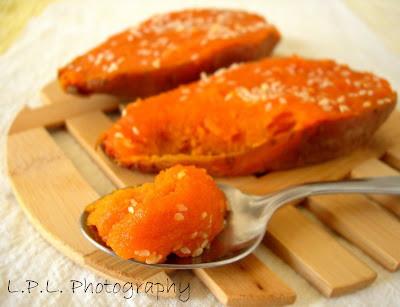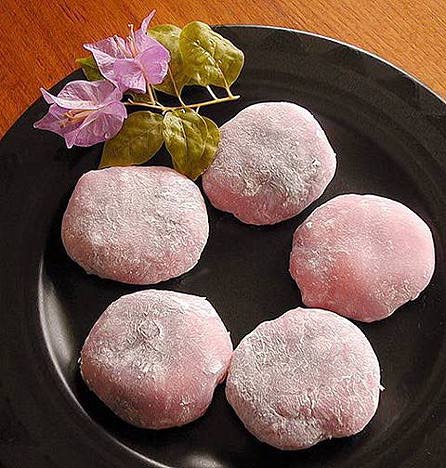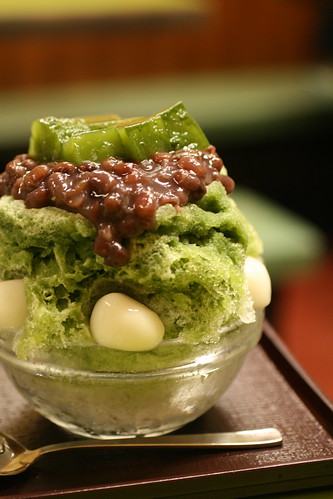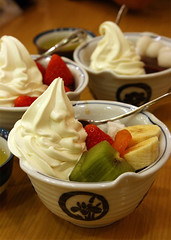"ราเมง" เป็นอาหารอีกอย่างหนึ่งที่นิยมมากที่สุดในญี่ปุ่น ถ้าฝั่งตะวันตกยกให้แฮมเบอร์เกอร์เป็นอาหารจานด่วน ที่ญี่ปุ่นก็ต้องยกให้ราเมงเป็นอาหารจานด่วนที่มีคุณค่าทางอาหารมากกว่าแฮมเบอร์เกอร์ ที่ญี่ปุ่นจึงมาร้านราเมงพุดขึ้นมาเป็นดอกเห็ด พอ ๆ กับร้านก๋วยเตี๋ยวบ้านเราเลยทีเดียว ซึ่งแต่ละแห่งก็มักจะมีสูตรน้ำซุปที่เป็นสุดยอดเคล็ดลับของแต่ละร้าน
การจะทำราเมงให้อร่อนนั้น ไม่ใช่เรื่องง่ายเพราะต้องใช้เวลาเคี่ยวน้ำซุปจากกระดูกเป็นเวลาหลายชั่วโมง หรือบางแห่งอาจนานถึง 8 ชม. เลยทีเดียว เพราะรสชายหลักของราเมงนั้นจะแตกต่างกันก็ตรงน้ำซุปนี่แหละ เพราะฉะนั้นจึงไม่ต้องสงสัยเลยว่าน้ำซุปของราเมงนั้นจะอร่อย หวาน กลมกล่อมแค่ไหน และทำไมนั่งกินราเมงแล้วถึงไม่มีเครื่องปรุง เหมือนไปนั่งโซ้ยก๋วยเตี๋ยวเหมือนบ้านเรา ที่ต้องใส่พริงหนึ่งช้อน น้ำส้มสายชูสองช้อน น้ำตาลครึ่งช้อน เรียกได้ว่าถ้ากินราเมงก็ไม่ต้องปรุงเพิ่มแต่อย่างใด หากเผลอไปปรุงเข้าอาจจะโดนเจ้าของร้านค้อนให้ได้ เพราะฉะนั้นอย่างที่ได้กล่าวข้างต้นไปแล้วว่าน้ำซุปของแต่ละร้านจะมีรสชาดแตกต่างกัน มีทั้งน้ำซุปที่เคี่ยวจากกระดูกไก่ , กระดูกหมู, ปลาซาดีน หรือ (niboshi) นอกจากนั้นยังมีน้ำซุปที่ปรุปจากสาหร่ายนานาชนิด น้ำซุปจากผักต่าง ๆ เช่น หัวผักกาด ขิง กระเทียม ต้นหอม และเห็ด
 เราสามารถจำแนกราเมง ได้ 4 แบบด้วยกัน คือ
เราสามารถจำแนกราเมง ได้ 4 แบบด้วยกัน คือ1. Shio Ramen น้ำซุปที่เกลือเป็นส่วนผสม
2. Shoyu Ramen น้ำซุปที่ใช้ซอสถั่วเหลืองเป็นส่วนผสม สีออกน้ำตาล หรือใส
3. Tonkotsu Ramen น้ำซุปที่ทำจาก กระดูกหมู ซุปจะมีสีขาวเหมือนน้ำนม
4. Miso Ramen น้ำซุปที่เคี่ยวจากเต้าเจี๊ยว ซุปนั้นจะได้น้ำซุปสีออกน้ำตาลมีกลิ่นหอมของเต้าเจี๊ยว บางแห่งน้ำซุปจะใส
โดยทั่วไปราเมงก็จะมี negi (ต้นหอม), shinachiku (หน่อไม้), nori (สาหร่าย), yakibuta (หมูแฮมหมัก), ไข่ต้ม เป็นต้น แต่ราเมงในเมนูตามร้านราเมงนั้นมักจะตั้งชื่อตามหน้าราเมง หรือตั้งตามท๊อปปิ้งที่ใส่ไว้บนราเมง เช่น
* Chashumen: เป็นรางเมงที่จะมีเนื้อหมูที่ผ่านการหมักและย่างมาแล้ว มีรสชาติดีและมีกลิ่นหอม หั่นเป็นแผ่นบาง ๆ
* Tanmen: ราเมงสารพัดผักไม่ว่าจะเป็น ต้นหอม หน่อไม้ สาหร่าย
* Wonton ramen: ราเมงที่มีหน้าเป็นเกี๊ยวไส้ต่าง ๆ
* Champonmen : ราเม็งหน้ารวม
* Hiyashichuka : ราเม็งเย็น
* Tonkatsu ramen : ราเม็งหน้าหมูทอด
* Tongarashimiso ramen : ราเม็งต้มยำพริกญี่ปุ่น
สูตรราเมง / สูตรราเมน ら-メン
หากจะทำราเมงทานที่บ้าน ขอแนะนำให้ใช้ราเมงกึ่งสำเร็จรูป เพราะเป็นทางที่ง่ายที่สุดที่จะได้กินราเมง โดยในซองราเมงนั้นจะมีเครื่องปรุงน้ำซุปให้เสร็จ โดยเพียงแค่ต้มน้ำแล้วเอาซองเครื่องน้ำซุปไปต้มในน้ำเดือด หลังจากนั้นก็เอาเส้นราเมงไปต้มในน้ำซุป ก็เสร็จเรียบร้อย
เวลากินราเมงที่ร้านราเมงที่ญี่ปุ่นนั้น ก็ไม่ต้องสงวนท่าทีเพราะสามารถทำเสียงดังเวลาซดน้ำ หรือสูบเส้นเข้าปากได้ไม่มีใครมาคอยส่งค้อนให้แน่นอนคะ เพราะถือเป็นธรรมเนียมปฎิบัติกันเลยทีเดียว ยิ่งซดน้ำเสียงดังเท่าไหร่แสดงว่าราเมงชามนี้อร่อยสุด ๆ ไปเลยคะ
image / info credit:
http://myjapanesefood.blogspot.com/2011/01/types-and-variations-of-ramen.html
http://www.j-doramanga.com/lesson_detail.php?id=526
......................................................................................................................................................
อาชีพอิสระ: สูตร ราเมง Ramen
เครื่อง (Topping) เครื่อง ของราเม็งส่วนใหญ่จะประกอบไปด้วย เนื้อปรุงรส ผักชนิดต่างๆ หรืออาจมีการเพิ่มเครื่องต่างๆ ตามแต่สูตรของแต่ละร้าน ...
http://workdeena.blogspot.com/2009/07/ramen.html
Flashfly Dot Net Forums :: อ่าน - เห็นขอกันมามาก สูตร ราเมง
ให้ใช้ของ เนะกิเซะ ครัย 45 บาท มั้ง foodland อีกแล้วครับ ท่าน... ลูกชิ้น ญี่ปุ่น ก็หาเอา แถวนั้น มีขาย... หมู ที่ทานกับ ราเมง สูตรหมัก 1.น้ำมันหอย 2.น้ำตาล ...
http://www.flashfly.net/forums/viewtopic.php?t=157692
สูตรราเมนแสนอร่อย
สูตรราเมนแสนอร่อย. มิโซะ ราเมน · ทงคัตซ ึราเมน ... เวลาเสิร์ฟให้ตักเส้นราเมนที่ลวกแล้วใส่ชามหั่นหมูเป็นชิ้นพอคำวางไว้ข้างบน แล้วราดด้วยน้ำซุปซอสญี่ปุ่น ...
http://pirun.ku.ac.th/~b4910039/Untitled-4.html
D2492475 ขอสูตรหมี่เย็น ( ซะรุ ราเม็ง ) ด้วยค่ะ ชอบมากๆ ไม่น่าจะทำ ...
ขอสูตรหมี่เย็น ( ซะรุ ราเม็ง ) ด้วยค่ะ ชอบมากๆ ไม่น่าจะทำยากเท่าไหร่. ขอสูตรหมี่เย็นค่ะ ขอบคุณมากๆค่ะ. จากคุณ : น้องเล็ก - [ 11 ต.ค. ...
http://topicstock.pantip.com/food/topicstock/D2492475/D2492475.html
Zmeal Recipes Center -> ราเมงไข่เจียวปูอัดสูตรครัวบ้านพิณจ์ทอง
17 มี.ค. 2006 ... ตักน้ำซุปมาราดหน้าเส้นราเมงที่เตรียมไว้แล้ว โรยหน้าด้วยพริกไทยป่น ก็เป็นอันเสร็จค่ะ ... ลูกเป็ดน้อย ราเมงไข่เจียวปูอัดสูตรครัวบ้านพิณจ์ทอง 21/12/05 10:42 PM ...
http://v2.zmeal.com/board/index.php?showtopic=6223

